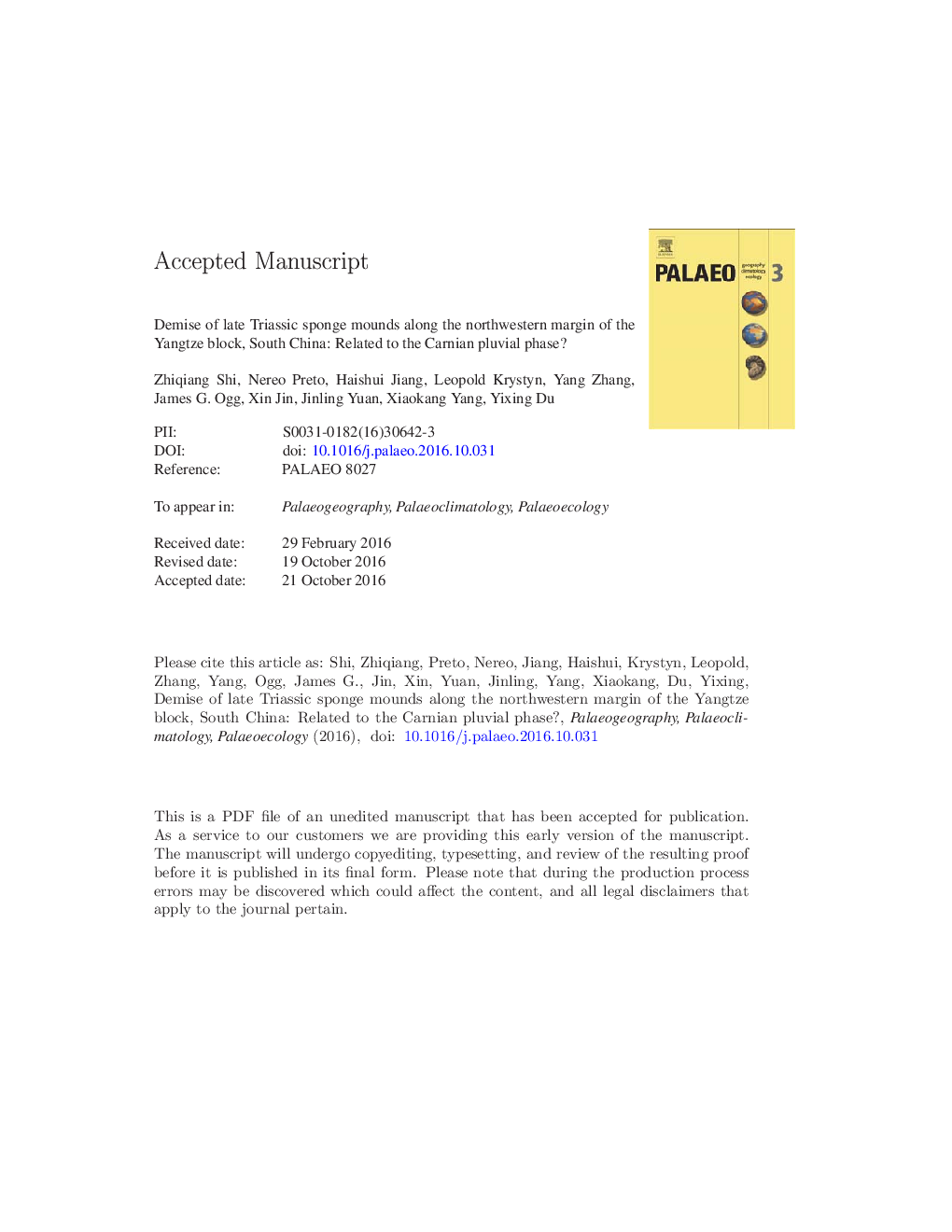| کد مقاله | کد نشریه | سال انتشار | مقاله انگلیسی | نسخه تمام متن |
|---|---|---|---|---|
| 5755966 | 1622118 | 2017 | 65 صفحه PDF | دانلود رایگان |
عنوان انگلیسی مقاله ISI
Demise of Late Triassic sponge mounds along the northwestern margin of the Yangtze Block, South China: Related to the Carnian Pluvial Phase?
دانلود مقاله + سفارش ترجمه
دانلود مقاله ISI انگلیسی
رایگان برای ایرانیان
موضوعات مرتبط
مهندسی و علوم پایه
علوم زمین و سیارات
فرآیندهای سطح زمین
پیش نمایش صفحه اول مقاله

چکیده انگلیسی
Upper Triassic (Carnian) marine successions in the northwestern margin of Upper Yangtze Region (Sichuan Basin, China) show a lithological change from grey oolitic into a sponge-mound limestone (Units 1 and 2 of the lower member of the Ma'antang Formation), then overlain by greyish black to dark grey sandy shale and siltstone (Units 3 and 4 of the upper member of the Ma'antang Formation). Siliceous sponge mounds were built by Hexactinellida, and this succession was examined in three localities: Jushui section in Anxian (JS), and Guanyinya (HWG) and Qingyangou sections (HWQ) in Hanwang, Mianzhu. The conodont Quadralella polygnathiformis confirms a Carnian age for the biolithite and oolitic limestone of the lower Ma'antang Formation. Abundant ammonoids identified as belonging to the Discotropitid and Juvavitid families suggest a Tuvalian 1 (early Late Carnian) age for the lowermost part of the greyish black sandy shale that overlies the sponge mound at the Jushui Section. Field investigations and microfacies analysis suggest that sponge mounds had two stages of growth in relatively deeper water with low energy. The first sponge-growth mound stage ended in a regional karstified omission surface, and was followed by a sudden increase of siliciclastic input. Greyish black shales containing plant fossils cover a second Upper Carnian sponge mound stage, which is mainly recorded in HWG. The onset of these shales may be related to the Carnian Pluvial Phase (CPP) documented in the western Tethys region (e.g., in Italy, Austria and Hungary). The demise of the sponge mounds at all three sections may have been triggered by the joint effect of climatic changes associated with the fresh water input caused by CPP and with a relative sea-level change caused by local tectonic movements in the course of the Indosinian orogeny.
ناشر
Database: Elsevier - ScienceDirect (ساینس دایرکت)
Journal: Palaeogeography, Palaeoclimatology, Palaeoecology - Volume 474, 15 May 2017, Pages 247-263
Journal: Palaeogeography, Palaeoclimatology, Palaeoecology - Volume 474, 15 May 2017, Pages 247-263
نویسندگان
Zhiqiang Shi, Nereo Preto, Haishui Jiang, Leopold Krystyn, Yang Zhang, James G. Ogg, Xin Jin, Jinling Yuan, Xiaokang Yang, Yixing Du,